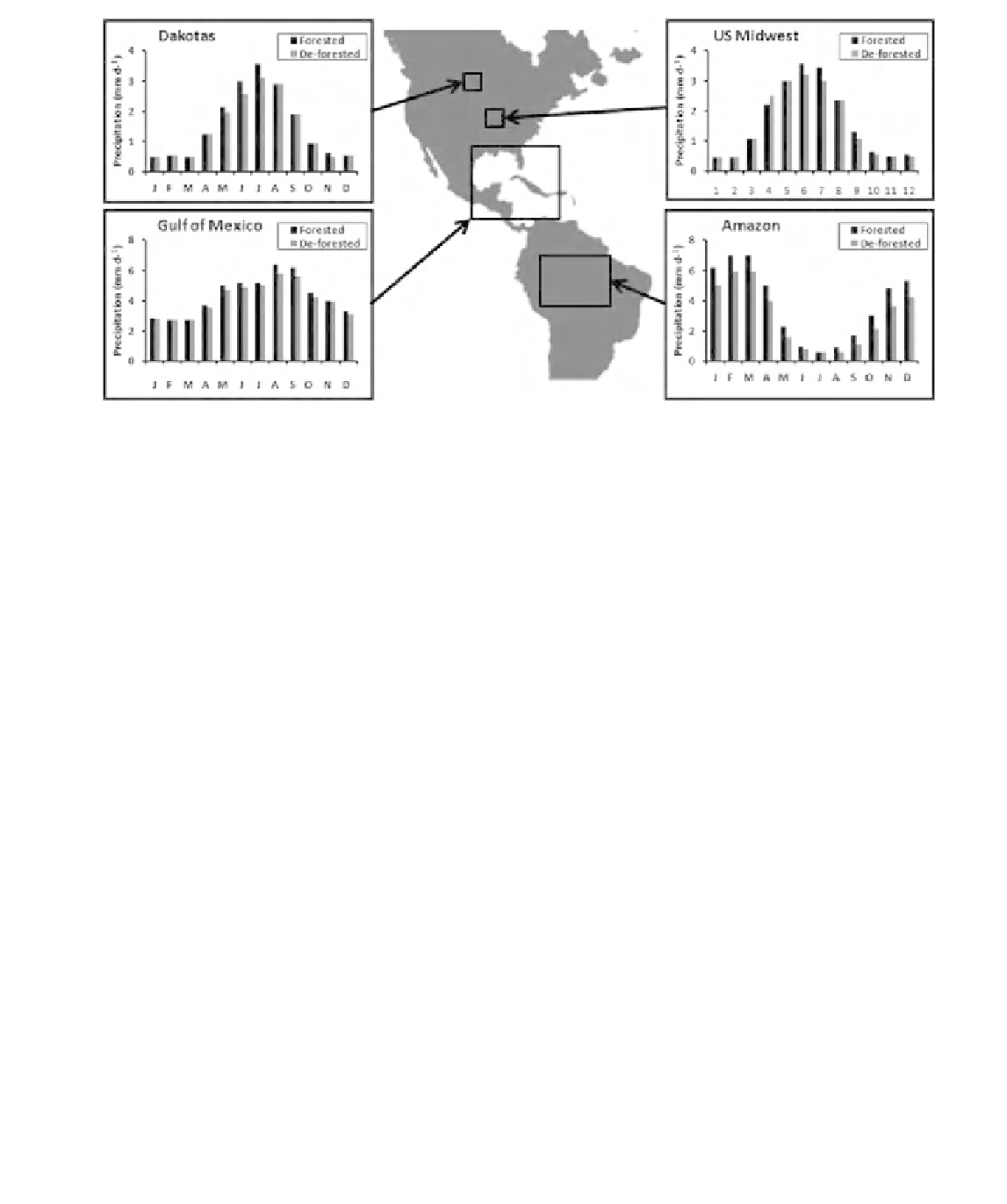Geoscience Reference
In-Depth Information
Figure 25.9
8-year average modelled precipitation at sites in North and South America (shown as rectangles on the map)
calculated for a forested and deforested region in Amazonia by the Goddard Institute for Space Studies Model II GCM
when used in an ensemble approach in which six control simulations were compared with six deforested simulations.
(Adapted from Werth and Avissar, 2002.)
simulations compared with six deforested simulations. They found the effect of
deforestation was strong in Amazonia itself, with reductions in precipitation,
evapotranspiration and cloudiness. But they also detected a noticeable impact in
several other regions of the world, some of which show a reduction in rainy season
precipitation: the 8-year average modeled precipitation at other sites around the
world is shown in Fig. 25.9 for a forested and deforested Amazon region.
Because it is physically plausible that extensive imposed land-cover change will
influence weather and climate at regional scale and because there is an extensive
literature of modeling studies that suggest this influence does occur, the mecha-
nism is assessed as 'very likely' in Table 25.1. There is some consistency in these
numerous modeling studies, but there is also significant numerical variability in
the magnitude and to some extent the nature of the predicted changes. The level of
understanding and modeling of the influence is assessed as being 'medium.
3.
Effect of imposed heterogeneity in land cover
It is plausible that imposed land-cover heterogeneity creates spatial differences in
land surface energy balance. If present at an appropriate scale (i.e., in patches of a
few 100s of square kilometers or with linear dimensions of a few 10s of kilometers,
rather than patch-scale), such heterogeneity can generate organized patterns of
buoyancy in the ABL giving mesoscale atmospheric circulations that influence




